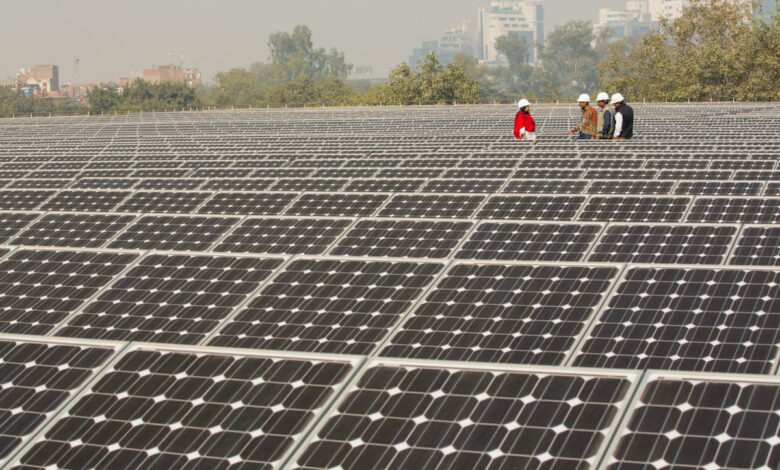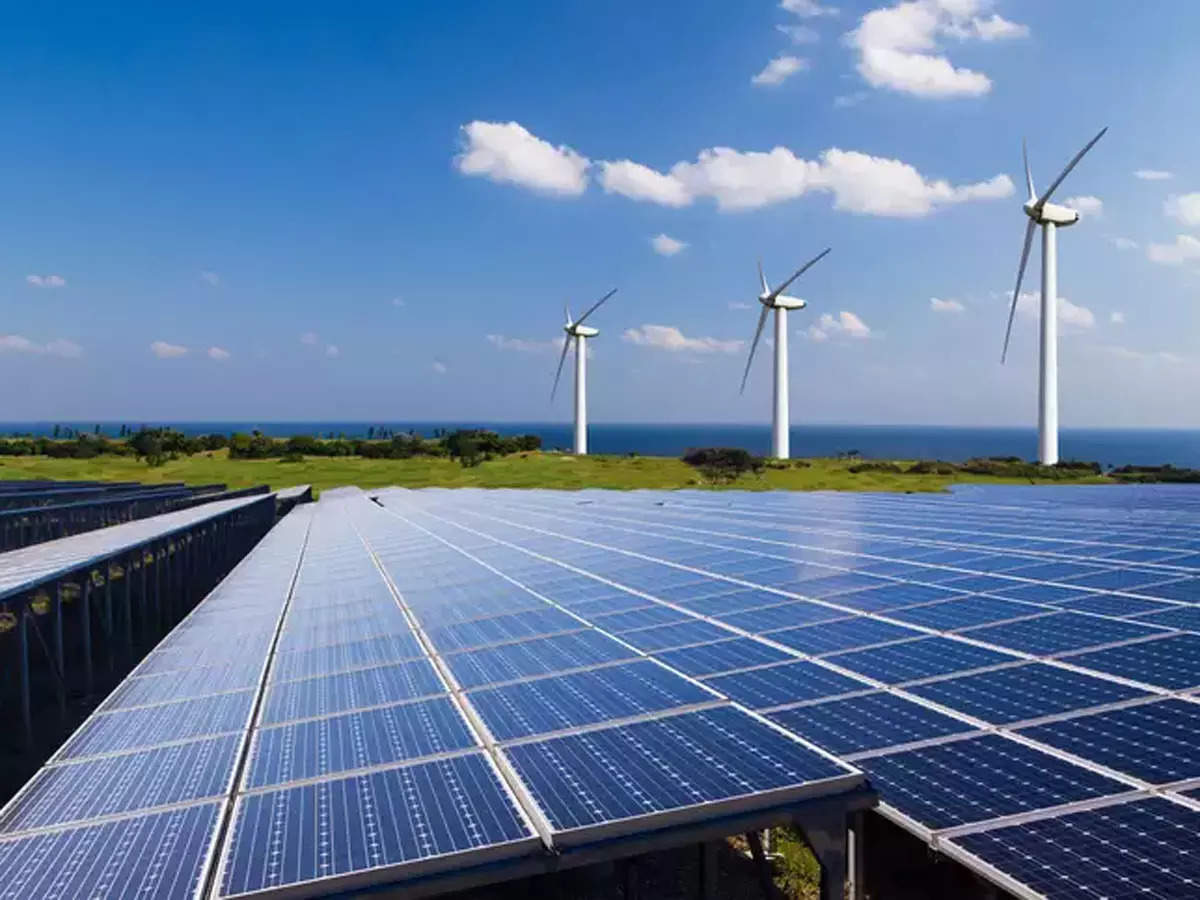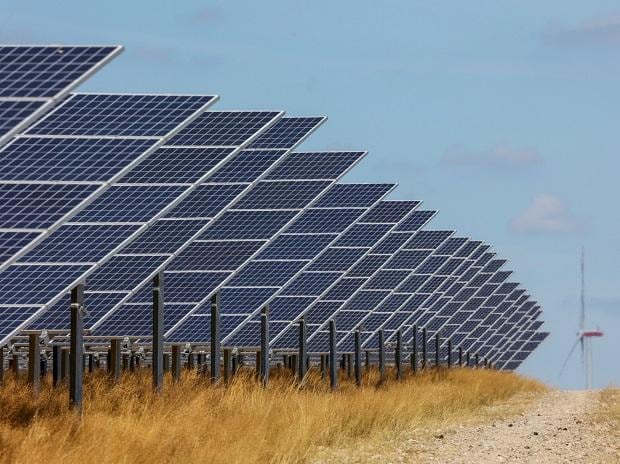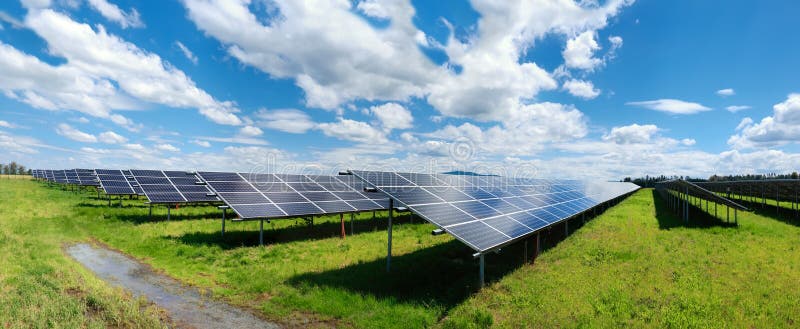Indian institutions are ill-equipped to tackle the shift to renewable energy issues.

Recent study indicates that a number of India’s most significant financial institutions face the risk of slipping behind in the transition away from fossil fuels, and that if current lending patterns continue, India may get “trapped” in carbon-intensive development. The global think tank ODI, the not-for-profit policy advisory Climate Bonds, and the policy advisory on sustainable development auctusESG together performed the report, which went online on December 30.
Loans and investments in carbon-intensive assets, businesses, and industries may not produce the expected profits as we move toward a low-carbon development route. Even while there is interest in increasing the capacity for the production of renewable energy, the study concluded that India’s financial industry is “heavily vulnerable” to these risks. India’s installed capacity from non-fossil fuel sources is 172.72 gigawatts (GW) as of October 2022, more than tripling from 2015. However, electricity generation is still mostly dominated by coal, at over 75%.
5.2% of all outstanding loans from Indian banks in carbon-intensive industries go to the production of electricity, which is the major source of carbon emissions in the nation. However, the analysis revealed that just 17.5% of this borrowing was done by utilities that simply used renewable sources of energy or provided equipment and services for renewable sources.
Given India’s high average emission intensity and levels of debt, “Firms in electricity generation probably face exceptionally severe transition risks,” it said. A few energy-intensive businesses with high emission intensities and debt levels include cement, iron and steel, non-ferrous metals, and civil aviation. As the low-carbon transition picks up speed, businesses in these areas almost likely represent a danger to their creditors.
According to the data, oil and gas extraction accounts for three-fifths of lending to the mining industry, while debt for petroleum refining and allied businesses accounts for one-fifth of lending to the manufacturing industry.
India has the fifth-largest economy and the third-largest carbon emissions in the world. The International Energy Agency has stated that its commitment to attaining net zero emissions by 2070 will significantly support global efforts to control global warming, making its transition away from fossil fuels vital both domestically and internationally.
However, the Indian financial industry is utterly unprepared to meet the challenge. Only four of the 10 big banks studied gather data on environmental, social, and governance (ESG) hazards, while none do so for climate change’s physical concerns.
The results support earlier studies that revealed Indian banks weren’t moving forward quickly enough to meet the nation’s climate ambitions. The researchers used surveys from Axis Bank, Bandhan Bank, HDFC Bank, ICICI Bank, IndusInd Bank, NABARD, Punjab National Bank, SEWA Bank, State Bank of India, and SBI Mutual Fund to assess sector-specific lending by banks as well as knowledge gaps regarding climate change in India’s financial systems.
The survey found that three financial institutions failed to provide information, and seven did not have any board members with expertise in climate change. Only two of these organizations evaluate greenhouse gas emissions, and only one evaluates the hazards of transmission from climate change. “Therefore, finance professionals just lack the information to make knowledgeable judgments regarding transactional or portfolio level exposure to climate-related risks,” the study said.
Only 18% of the 154 financial professionals surveyed have used ESG risk approaches to assess and analyze projects, even though 78% claimed they were aware of the concepts connected to ESG and climate change concerns. The survey discovered that financial professionals “tended to have the greatest understanding of governance issues and were weakest on the linked themes of greenhouse gas emissions and transition risks.”
The required disclosure of low-carbon transition risks is the starting point for many central banks, and ODI noted that “our study highlights the need for increased openness in India since the usual sectoral classifications disguise the carbon intensity of loans and investments.”
“Central banks’ participation and actions both validate and bolster hopes for a future with limits on carbon emissions. Experiences in other contexts have shown that altering bankers’ risk perceptions can assist to limit the growth of fossil fuel assets, which in turn strengthens the legitimacy of carbon limits. Nearly all of the 34 banks surveyed in India last year by the think tank Climate Risk Horizons were unprepared for risks connected to the climate, with private sector banks performing just marginally better.
Economy at risk from shift to sustainable energy, according to a report
According to a review of individual loans and bonds, oil and gas extraction accounted for 60% of lending to the mining industry, while petroleum refining and related businesses accounted for one-fifth of debt in the manufacturing industry. Only 17.5% of this loan went to pure-play renewables, even though electricity production, by far the biggest source of carbon emissions, accounted for 5.2% of total outstanding credit.
Less than half of the 154 financial professionals polled knew about environmental concerns, such as transition risks, greenhouse gas emissions, and the mitigation and adaptation to climate change. Only four out of the ten main financial institutions assessed gathered data on environmental, social, and governance (ESG) concerns and these companies don’t consistently use such knowledge in financial planning, according to the authors. Our research indicates that to achieve a smooth transition to net zero, financiers, regulators, and politicians in emerging and developing countries need to move quickly.
India will achieve net-zero emissions by 2070, according to Prime Minister Narendra Modi’s commitment from 2021. India has also said that it intends to meet 50% of its energy demands by 2030 using non-fossil fuel sources. But it has also insisted that to fulfill these obligations, it requires finances of the order of at least a trillion dollars.
India’s financial industry is significantly exposed to possible transition risks as compared to the country’s policy obligations concerning these lending and investment trends. “As the RBI-led pace continues to speed up, financial institutions will need to scale up their capabilities very swiftly. Neha Kumar, one of the co-authors and the leader of the Climate Bonds Initiative’s South Asian projects, said that the possibility to channel financial resources toward sustainable assets and efforts is significant.
Later this week, India’s Reserve Bank of India is anticipated to start an auction for its first-ever sovereign green bonds, including 5-year and 10-year notes valued at $40 billion. An emphasis on the energy transition and mobilizing sustainable financing is also a result of India holding the G-20 chair. 10% of the total debt owed to Indian financial institutions is from high-carbon industries, including iron and steel, chemicals, power generation, and aviation. These industries have the least financial capacity to respond to shocks and stressors since they are also deeply leveraged.
India presently generates 70% of its electricity and uses coal for 44% of its key energy sources. The average age of the nation’s coal-fired power plants is 13 years, and India is the second country behind China in terms of projected new coal capacity at 91,000 MW. In contrast to its present contribution of 70%, coal’s role in the mix of energy generation would drop to 50% by 2030, according to the Draft National Electricity Plan 2022.
“Due to the financial decisions made by Indian banks and institutional investors, the country is now dependent on an energy source that is more expensive and harmful. Just 17.5% of the bank credit supplied to the electrical industry, for example, has gone to renewable energy sources. Compared to other nations, India generates a lot more electricity from carbon-based sources, while having a large potential for inexpensive solar, wind, and small hydro power.
The Overseas Development Institute’s director of climate and sustainability, Sarah Colenbrander, who is also one of the study’s authors, noted that shifting resources to these renewables would result in significant advantages such as cheaper power, better air, and lower emissions.
edited and proofread by nikita sharma



